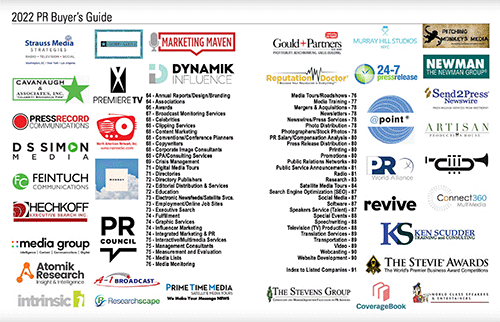
Vilan Trub |
|
|
When audiences look for news, whether on social media, digital platforms or traditional, there are certain expectations of how it will look: headlines, hero images, container graphics, multimedia and text. The story isn’t the whole story, just one of the assets that journalists will use to relay information surrounding an event. News today comes to us in a package and readers expect graphics, images, and photographs to be part of that package. It’s so expected that when Reuters Institute released its “Digital News Project: Journalism, Media and Technology Predictions 2016,” the focus was no longer on static images, as it had been in previous years. Instead, the attention was given to the next generation of multimedia.
Predicting the future of multimedia
According to the report, the media landscape of tomorrow will be one of virtual reality, snap, live streaming, and an innovative use of images, such as hyperspotted images. Multimedia is becoming immersive and interactive, allowing users to tap back into the real world through digital platforms. In addition to the evolution in form, there is also an evolution in function for multimedia, beyond its role as a supplemental asset and developing as a visual answer to news-consumers’ questions.
An example where multimedia was used to present viewers with a detailed representation of its associated story is taken from an article covering last year’s UK general election. The British daily newspaper The Guardian published a picture of the leading candidates superimposed over a height scale to answer reader inquiries about the height of David Cameron. Our expectations for such an article are to see an image of David Cameron followed by textual data; a visual image that relates to the topic within the body of the article. Rather than just offer the reader a visual stimulant, The Guardian presented the multimedia asset as a source of information. This evolved use of multimedia can exist and be engaged independently of the text and still offer the same content. Business Wire followed this example by producing an infographic to visually showcase the success of a highly viewed news release; a new hire announcement issued by Nintendo. We integrated analytical data such as release views, image views and social media metrics directly into a series of images that were related to both the metrics presented and the brand behind the original release.
Images won’t just aid communication in the future, they will be used as a form of communication. Just like novels are adapted and produced as movies, news and associated images are being adapted and presented in a new way. This is evident through the evolution of social media platforms to incorporate more multimedia. Twitter recently rolled out Twitter Moments, a section of the site dedicated to arranging trending tweets paired with images to tell a bite-size news story.
Generation Z, according to Mary Meeker’s “2016 Internet Trends Report,” is described as having an innate knowledge of digital technologies, uses 5 screens at once, and communicates using images. What might have seemed like a science fiction movie only a decade ago is today a reality. The quickly growing younger generation is demanding for and recreating the real world within digital platforms. The real world is one of visual, audio and other sensory stimuli. The way we observe the real world is the basis for how we will one day observe content over the internet.
According to the same report, the number of images shared daily on select social media platforms (snapchat, Facebook Messenger, Instagram, WhatsApp, Facebook) jumped from 1.8 billion to 3.25 billion in the last year. We can ask ourselves if this is a trend because multimedia is so prevalent, or if multimedia is so prevalent because of its effectiveness in delivering a message. An investigation of the latter, when coupled with developers designing assets that are even more engaging and interactive, shows us that people want multimedia because it offers instant stimulation. Achieving the same reaction with text-only content might not be possible, and if so, it takes an even longer amount of time. We don’t see the world around us textually represented. When we look at a chair we see a chair, and not the word chair. Multimedia is a tool that aids in bringing that realism to the digital playground. It allows journalists to show us the news as opposed to just telling us the story. Generation Z is showing us that text supplements multimedia, not the other way around. We in the news industry have always known this was the case and technology finally caught up.
The last several years saw communications’ thought leaders time and time again announce the coming of a visual age. That moment passed and now we need to accept it as normal. Referring to journalism with multimedia as visual journalism is like referring to a movie with sound as a “talkie.” Just like silent films are now studied as a historic artifact, so is the era when the internet lacked multimedia. Journalism is visual, it’s engaging and it’s evolving. Today, readers see their news as if they’re seeing it happen in front of them. It’s not visual journalism, it’s just journalism. Starting today, communications professionals must start thinking about the news of tomorrow. That’s what we should be writing about and presenting visually, as that is what the audience is expecting and what we should be delivering.
* * *
Vilan Trub is Marketing Content Lead at Business Wire.




 SaaS platforms now allow businesses to effectively manage and execute their own PR campaigns, putting pressure on agencies to demonstrate the value of the “traditional” PR model.
SaaS platforms now allow businesses to effectively manage and execute their own PR campaigns, putting pressure on agencies to demonstrate the value of the “traditional” PR model. Developing a well-designed TV campaign involves asking three important questions.
Developing a well-designed TV campaign involves asking three important questions. How a "Covid silver lining" can show the way to more effective, cost-efficient video communications.
How a "Covid silver lining" can show the way to more effective, cost-efficient video communications.


 Have a comment? Send it to
Have a comment? Send it to 
No comments have been submitted for this story yet.